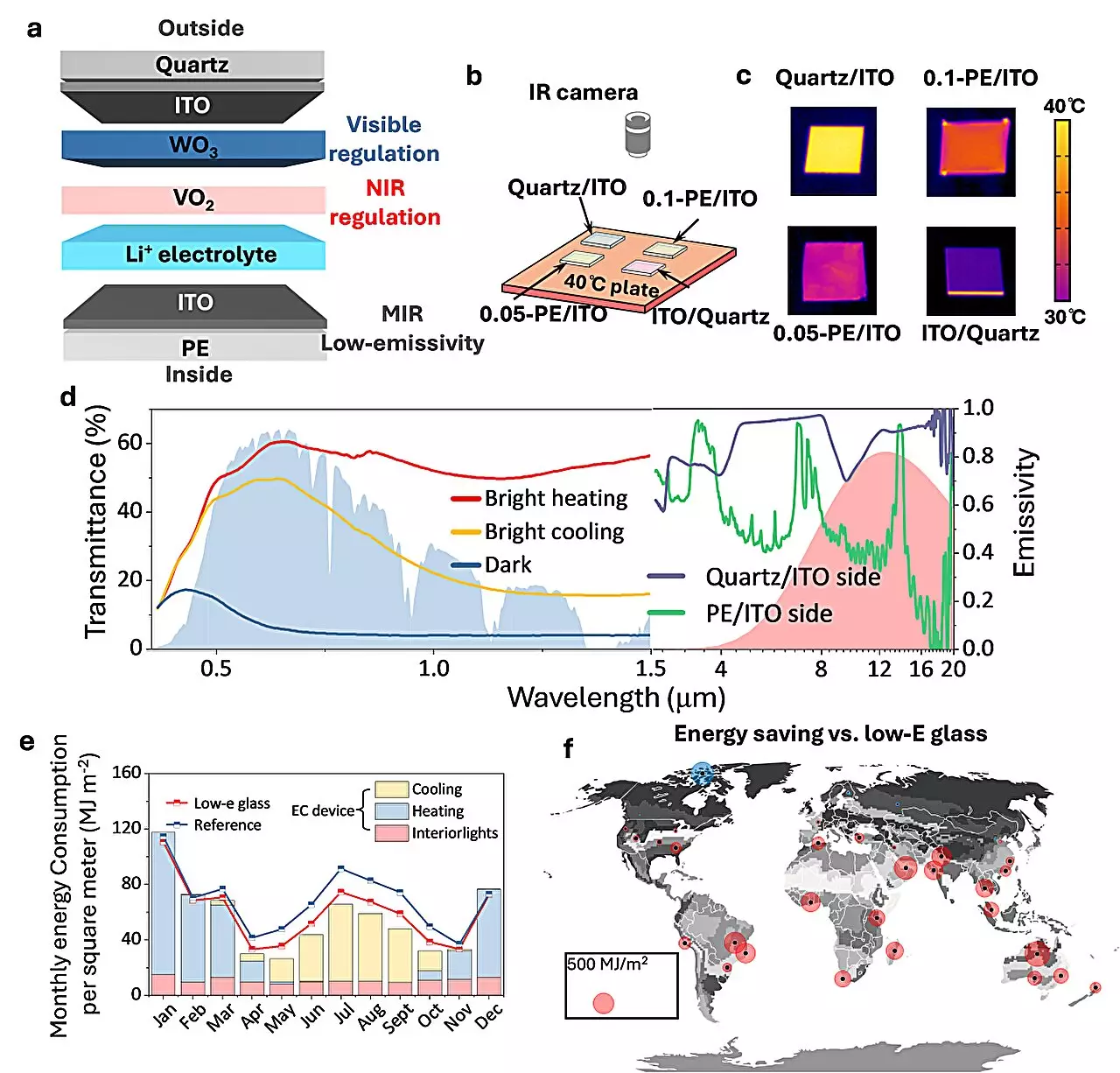Energy-saving windows have been a topic of interest for researchers around the world, with the potential to significantly reduce the energy consumption of buildings. One research team, led by Prof. Cao Xun from the Shanghai Institute of Ceramics of the Chinese Academy of Sciences, has made a groundbreaking discovery in the field of electrochromic (EC) smart windows.
In a recent publication in Nature Sustainability, the team introduced a new type of EC structure for energy-saving windows. While previous efforts have focused on improving factors such as response speed and contrast ratio, little progress has been made in addressing the impact of solar radiation and outdoor temperature. The researchers designed a new electrochromic smart window system based on a VO2-WO3 tandem film via a solid electrolyte, providing tri-stable control of solar heat and sunlight transmittance simultaneously.
The key innovation of this new EC structure lies in its ability to allow Li+ to diffuse along the depth of VO2 and WO3, independently regulating the near-infrared (NIR) and visible transmittance of sunlight. Unlike traditional methods, this design decouples the barrier for maintaining the state from the barrier for changing the state. This results in non-volatility compared to existing technologies, such as WO3. The implications of this breakthrough are significant, as it enables EC-based windows to minimize the total energy cost of indoor lighting and heat exchange.
Simulations have shown that this new EC structure exhibits higher heating and cooling energy savings compared to a commercial low-E glass in most climates worldwide. Outdoor experiments conducted in Sanya, Hainan Province, and Shanghai have demonstrated continuous cooling of up to 2°C–14°C throughout the day on a clear sunny day. This indicates the potential for widespread adoption of this technology in various regions with different climate conditions.
The development of this new electrochromic smart window system represents a significant advancement in the field of energy-saving windows. With its ability to regulate solar heat and sunlight transmittance simultaneously, this technology has the potential to revolutionize the way we approach energy efficiency in buildings. As researchers continue to innovate and improve upon this breakthrough, we can expect to see even greater strides in the development of sustainable building technologies in the future.


Leave a Reply